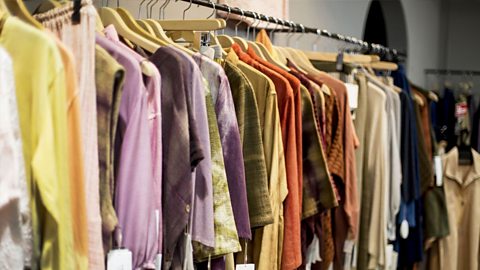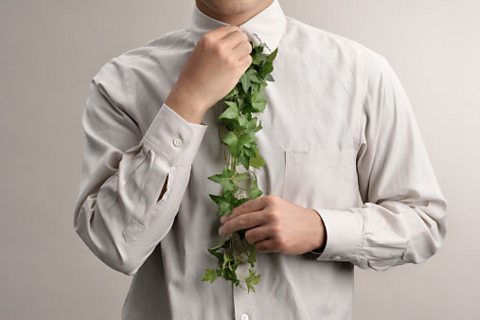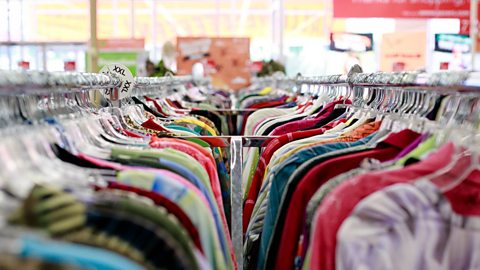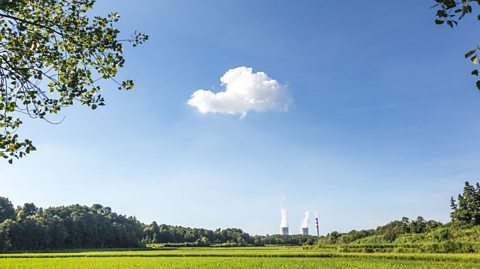тDoes it fit properly? Do I really need it? Maybe a different colour? Can I even afford it?!т
Buying new clothes has always been tricky - getting the right fit, style and price tag. But now thereтs even more to think about!
The sustainability of the fashion industry has become a hot topic. Fast fashion has been associated with greenhouse gases, water and air pollution, troubling levels of waste, and poor working conditions.
Many of us are becoming more conscious of wanting to shop in a sustainable way, but what does it mean for clothing to be sustainable? And can we ever really know the full social and environmental impact of what we are buying?

We spoke to Nina Stevenson, Education for Sustainability Leader at London College of Fashion, University of the Arts London. She works in the Centre for Sustainable Fashion, a research centre that looks at and challenges our behaviour in the fashion industry and its social and environmental impact.

'Sustainability isn't a tick box'
She said we need to understand the complexity of the many elements of the fashion industry to get to grips with sustainability.
тFirst we need to realise that тsustainableт isnтt a tick box - it isnтt yes or no, sustainable or unsustainable, there are many different factors that can determine sustainability,т she said.
She explained although there might be a certification, like a logo or a label, on a garment that flags some sort of sustainability, these are only certifying one element in the productтs journey.
For example, a garment might be made from multiple materials from various locations around the world, it will then need to be processed, woven or knitted, treated, and maybe distressed, before being turned into the item itself,. It is then shipped, the finishing touches added and finally distributed. Ms Stevenson said certifying an item of clothing as completely sustainable is actually тnigh on impossibleт when you consider the тvery, very complex supply chain that an item has to get to the shop floorт.


'A lot of question marks'
Dr Mark Sumner, who lectures at the School of Design at the University of Leeds and specialises in sustainability in retail and fashion, agreed that the complexity of the industry makes it incredibly hard for the consumer to ever really know how sustainable their clothes are.
He described the fashion industry as having тa lot of question marksт. According to Dr Sumner we can look at what he called тsingle dimensions of sustainabilityт, in other words, environment or social elements of the garments journey that add to its impact, e.g. water consumption, carbon footprint, sourcing of raw materials, or workersт rights.
He said itтs rare for any brand to be able to give equal attention to all these тdimensionsт and even then, experts canтt agree on what sustainability should look like.
All this makes it very difficult, perhaps even impossible, for the consumer to really know the sustainability of the clothes they are perusing.
So, if we canтt really know for sure, what else can we do?


Here are some suggestions from our sustainability experts:
Shop more mindfully
According to Ms Stevenson the first thing we can do is to start shopping тdifferentlyт. We can shop less frequently, we can swap or share with friends, and we can think creatively about where to source our clothes, e.g. charity shops, car boot sales or vintage shops.
Buying clothes that are durable is also important, but Dr Sumner reckons we need to be thinking about longevity in terms of our emotional connection to the clothes as well as how long they last.
Consider what is important to you. Does it make you feel good? Identify its use and role within your life and wardrobe before you buy.
Care and repair
Once youтve identified those key items that you really love, itтs about taking care of them.
Be mindful of how often you are washing your clothes and how they should be washed. Learn how to repair your clothes, or find someone within your community that can help you.
Dr Sumner said we need to be thinking about how we manage the second, third and even fourth life of a garment!
Do your research
Think about what matters most to you. Whether youтre particularly interested in animal welfare, fair trade, workersт rights or environmental issues, you may want to choose a brand that shares your values.
Ms Stevenson suggested reading reports and brands' sustainability policies and statements, and then shop where their values align to yours. Do your research.
Be informed
Ms Stevensonтs final piece of advice was about being informed and taking control:
тBeing informed as a consumer can only be a good thing. Itтs your money, your clothes and your body, so itтs your choice how you want to engage.т
How much do you really know about climate change?
We are always hearing about it in the news, but have you been paying attention?

Four jobs that could save the planet
The stories of four people who do their bit for our ecological future every time they clock in for a shift.

Sustainability and sustainable resources
What actually is sustainability? Check out this guide to find out.
